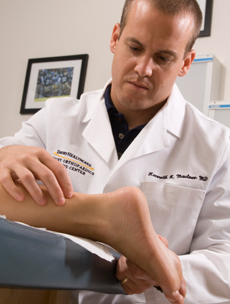Healing tender tendons

Ken Mautner
During the 2008 Olympics in Beijing, Olympic champion Liu Xiang was forced to withdraw from competition in the 110-meter hurdles because of a tendon injury that failed to heal.
Had he competed, he might have experienced a rupture with lifelong implications. Now athletes who endure chronic pain from tendon injuries may get relief.
Doctors at the Emory Sports Medicine Center have found that injecting platelets from a patient’s own blood to rebuild a damaged tendon has proven successful in not only relieving pain but also jump-starting the healing process. The procedure is called platelet-rich plasma therapy.
Tendons are the rope-like structures that connect muscle to bone, enabling the bone to move. When a tendon is first injured, it can become inflamed, swollen, and painful. However most chronic tendon pain lacks significant inflammation as the tissue itself begins to break down, accounting for why traditional treatments like rest, ice, and anti-inflammatory medications often fail to provide long-lasting relief.
“Once a tissue like a tendon has been injured and athletes continue to overuse it, the healing process fails us, and we are left with an unhealthy tendon that will not heal on its own,” says Emory orthopedist Ken Mautner (above).
“Some blame a lack of adequate blood supply to certain tendons. Some blame too much stress to the area. Whatever the reason, the tendon needs help to initiate the healing process. For years, the last resort for these problems was surgery to try to release or cut away the damaged tendon, procedures that met with mixed success. Platelet injections allow damaged tissue to regenerate and heal.”
The procedure is performed in an exam room and takes less than an hour. The patient’s blood is drawn and placed in a centrifuge for 15 minutes to separate out the platelets. The layer of platelet-rich plasma is then removed and injected into the diseased portion of the tendon with the guidance of an ultrasound machine.
Patients are put on a program of relative rest followed by physical therapy for the first six weeks. After six to 12 weeks, they are re-evaluated. Some patients with more difficult injuries may take more than one treatment to achieve successful outcomes. However, a majority of patients find that by three months they can return to most or all of the activities they were doing before the pain started—“sometimes activities they have been unable to do in years,” says Mautner. —Kathi Baker


